![]()
![]()
![]()
Use LEFT and RIGHT arrow keys to navigate between flashcards;
Use UP and DOWN arrow keys to flip the card;
H to show hint;
A reads text to speech;
32 Cards in this Set
- Front
- Back
- 3rd side (hint)
|
In Aerobic Respiration Carbohydrates are ultimately broken down into
|
CO2
|
|
|
|
Most ATP in Eukaryotic cells is produced in =
|
Mitochondria
|
|
|
|
Most ATP in Aerobic Respiration occurs in the process of =
|
Chemiosmosis
|
|
|
|
In aerobic Respiration, the energy and one mole of glucose is capable of producing how many ATP molecules =
|
38 x (6.0 2 x 10(23 pwr) molecules of ATP
|
|
|
|
Products of glycolysis include =
3ct |
Pyruvate
ATP NADH |
|
|
|
And glycolysis the most reduced compound formed is =
|
Pyruvate
|
|
|
|
And glycolysis the activation of glucose is accomplished by =
|
ATP
|
|
|
|
The products of the Krebs cycle include =
3ct |
Carbon dioxide
NADH FADH2 |
|
|
|
The final electron acceptor in aerobic respiration is =
|
Oxygen
|
|
|
|
In the presence of oxygen all cells synthesize ATP via the process of glycolysis. Many cells also can metabolize pyruvate if oxygen is not present via the process of =
|
Fermentation
|
|
|
|
The net result of the breakdown of glucose and glycolysis and fermentation is the production of =
|
2 ATP
|
|
|
|
Which stage of anaerobic respiration requires ATP =
|
Glycolysis
|
|
|
|
Which stage of aerobic respiration requires CO2 =
|
None
|
|
|
|
Which stage of aerobic respiration produces ATP and NADH and releases CO2 =
|
Krebs cycle
|
|
|
|
The high concentration of protons in the inner mitochondrial space relative to the mitochondrial matrix represents =
|
Potential energy
|
|
|
|
As protons flow through the ________, energy is released and exploited to combine ADP and inorganic phosphate to form ATP
|
ATP synthase
As proteins flow through the ATP synthase, energy is released and exploited to combine ______ & ______ to form ATP |
ADP
& Inorganic Phosphate |
|
|
4 stages of aerobic respiration
|
-Glycolysis
-Acetyl Coenzyme A (formation) -Citric Acid Cycle -Electron Transport Chain & Chemiosmosis |
|
|
|
Total free energy change during reaction
Fermentation = Aerobic Respiration = |
Fermentation
56 kcal |
Aerobic Respiration
686 kcal |
|
|
ATP synthesized
(net gain) Fermentation = Aerobic Respiration = |
Fermentation
2 |
Aerobic Respiration
36 |
|
|
Total free energy stored as high-energy phosphate bonds
Fermentation = Aerobic Respiration = |
Fermentation
14 kcal |
Aerobic Respiration
252 kcal |
|
|
Efficiency of recapturing usable energy from total energy released
Fermentation = Aerobic Respiration = |
Fermentation
25% |
Aerobic Respiration
37% |
|
|
Fraction of total available free energy from glucose molecule recaptured as ATP
Fermentation = Aerobic Respiration = |
Fermentation
2% |
Aerobic Respiration
37% |
|
|
Which is more efficient at extracting chemical energy?
Fermentation or Aerobic Respiration |
Aerobic Respiration
|
|
|
|
The model for aerobic respiration is the oxidation of the glucose molecule: =
|
(1) C6H12O6 +
6 O2 + 6 H2O + 38 ADP +38 P ---> 6 CO2 + 12 H2O + 38 ATP + 420 Kcal This equation has an oxidation component, = And a reduction component: = |
(2) C6H12O6 ---> 6 CO2
(3) 6 O2 ---> 6 H2O ---> |
|
|
Citric acid cycle
|
Each of the 2-carbon acetyl groups produced from the original glucose molecule is bonded to a pre-existing molecule of oxaloacetate to form citrate (i.e. citric acid). These two citric acid molecules are gradually oxidized, and the hydrogen ions are bound to NAD to form NADH and to FAD to form FADH2. Oxaloacetate is produced when the last carbon atom is released in the form of carbon dioxide.
|
|
|
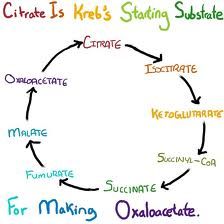
|
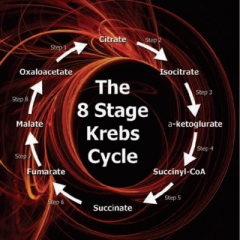
|
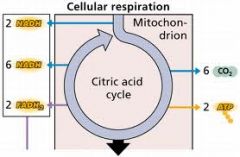
|
|

|

|
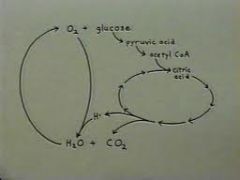
|
|
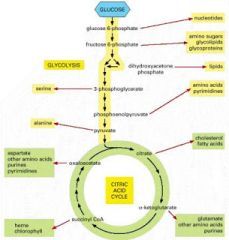
|
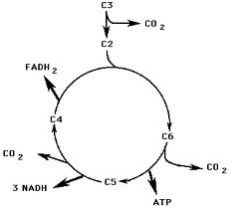
|
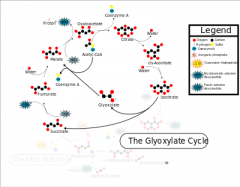
|
|
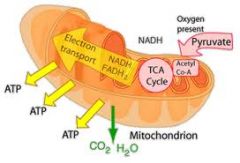
|
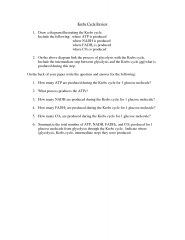
|
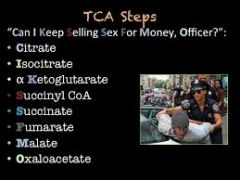
|
|
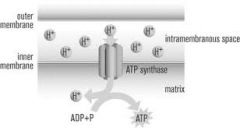
|
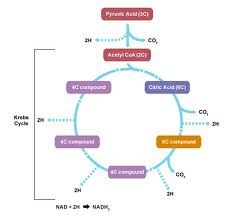
|
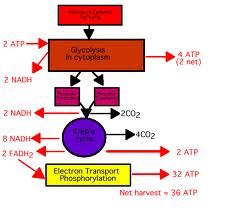
|
|
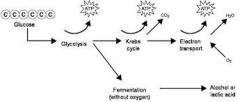
|

|
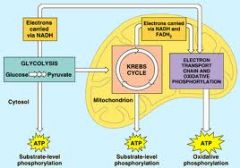
|
|
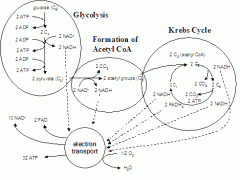
Pic above resource
http://faculty.clintoncc.suny.edu/faculty/michael.gregory/files/bio%20101/bio%20101%20lectures/cellular%20respiration/cellular.htm |
most Data resource
http://facstaff.cbu.edu/~seisen/AerobicRespiration.htm |
|

